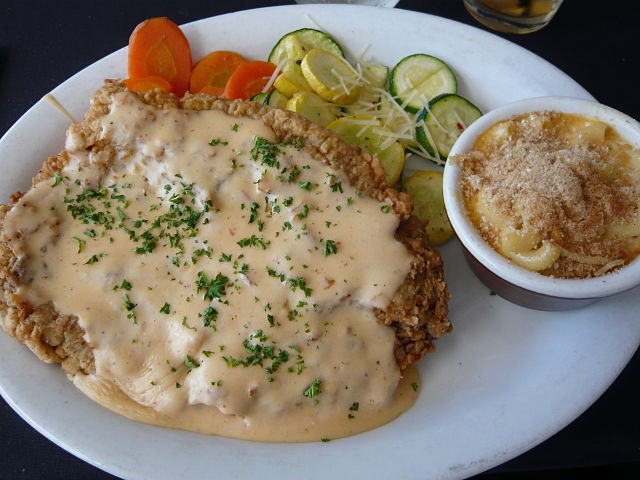Texas’s Last Last Meal

On June 7, 1998, a 49 year-old African-American from Texas man named James Byrd, Jr., was brutally murdered by three men. While Byrd was still alive, the perpetrators tied his ankles to the back of a pickup truck and dragged him for three miles; Byrd was decapitated in the process. Byrd’s murder resulted in a series of legislation, both on the state and federal level, which address criminal activities which are typically called “hate crimes.” Two of Byrd’s three assailants were sentenced to death, with the third sentenced to life in prison without possibility of parole. Of the two given the death penalty, one still sits on Death Row. The other, Lawrence Russell Brewer, was executed by the state of Texas on September 21, 2011.
Brewer’s ritual “last meal” was Texas’ last such “last meal.”
The tradition of serving the condemned a “last meal” of his or her choosing — a final rite of passage before the inmate’s final passing — has origins lost to antiquity. But most U.S. states with the death penalty still allow those about to be executed a special meal beforehand (albeit not always as their true “last” meal) of some sort. Texas, until Brewer, was no exception. Some requests were basic but extravagant, with at least two men (Ronald Clark O’Bryan in 1984 and Dennis Bagwell in 2005) asking for, and receiving, feasts centered on steak and french fries. Other requests were just plain strange. In 2001, a murderer by the name of Gerald Lee Mitchell requested that the state give him a bag of assorted Jolly Ranchers as a last meal; this request was granted. In 2000, a man named Odell Barnes asked for “justice, equality, and world peace.” And in 1990, James Edward Smith requested a lump of dirt used for voodoo rituals, as a way of marking his body for the afterlife. His request was denied, and he was given a cup of yogurt instead.
Brewer’s request? Per the New York Times, he asked for:
two chicken-fried steaks with gravy and sliced onions; a triple-patty bacon cheeseburger; a cheese omelet with ground beef, tomatoes, onions, bell peppers and jalapeños; a bowl of fried okra with ketchup; one pound of barbecued meat with half a loaf of white bread; three fajitas; a meat-lover’s pizza; one pint of Blue Bell Ice Cream; a slab of peanut-butter fudge with crushed peanuts; and three root beers.
The state provided him with this meal, costing hundreds of dollars and consisting of thousands of calories. And Brewer, claiming he was not very hungry, ate exactly none of it.
The next day, state legislators asked that the Department of Criminal Justice end the tradition of “last meals,” with one law maker stating that “it is extremely inappropriate to give a person sentenced to death such a privilege. It’s a privilege which the perpetrator did not provide to their victim.” The Department of Criminal Justice chairperson agreed, and the tradition ended. Since then, per the Houston Chronicle, “last meals will consist of whatever is on the menu for all prisoners” — with no special adjustments for those about to be executed.
Bonus fact: In 2007, Tennessee executed a man named Philip Workman. For his last meal, Workman requested that a vegetarian pizza be donated to a homeless person (not one person specifically), but prison officials, per CNN, denied that request, telling the news agency that “they do not donate to charities.” Nevertheless, Workman’s last wishes were carried out, many times over. Per the same CNN article, donors from around the country rose to the occasion, donating hundreds of pizzas to Nashville-area homeless shelters.
From the Archives: Contraband Confection: A piece of candy which condemned inmates can’t request as part of their last meal, at least not in the United States, because it’s illegal to import it.
Related: “Last Suppers: Famous Final Meals from Death Row” by Ty Treadwell, 4.8 stars on 14 reviews. Published in 2001, it predates Brewers’ meal by a decade. Also, what would fifty famous chefs make for their own “last meal?” This book aims to answer that question.

Leave a comment